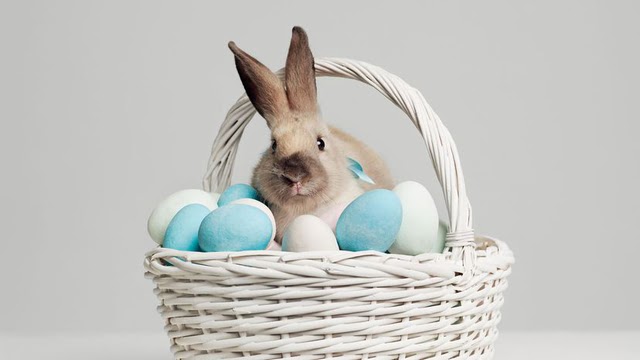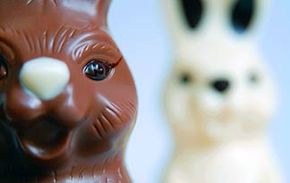Quck answer
Easter is celebrated with a bunny for several reasons:
1. Pagan Origins: The Easter bunny has its roots in Germanic pagan traditions where rabbits symbolized fertility and new life. When Christianity spread through Germany, the pagan tradition was combined with the Christian celebration of Easter.
2. Symbol of New Life: The bunny is a symbol of new life and rebirth, which is also the central message of Easter. The bunny’s ability to reproduce quickly and abundantly also symbolizes the renewal of life in spring.
3. Children’s Favorite: The Easter bunny has become a favorite among children, who eagerly await the arrival of the Easter bunny with Easter eggs and treats.
4. Commercialization: The commercialization of Easter has also contributed to the popularity of the Easter bunny. Retailers use the bunny as a marketing tool to sell Easter-themed products.
5. Fun Tradition: Finally, the Easter bunny has become a fun tradition that families enjoy together. Decorating Easter eggs and waiting for the bunny to arrive is a cherished memory for many.
Wild Animals

Every year during spring, Easter is celebrated across the world. The festivities include egg painting, egg hunting, and eating chocolate bunnies. Children often visit malls to take pictures with the Easter Bunny. However, have you ever wondered why a giant bunny became a symbol of Easter? Here are the top five reasons behind the association of Easter with the bunny.
5: Spring and Fertility

Rabbits and hares have been associated with spring and Easter for centuries. These animals are symbols of fertility and new life because they can give birth multiple times in a year. A doe can become pregnant within hours of giving birth, and the gestation period for rabbits is between 28 to 30 days.
4: The Goddess and the Hare

The Anglo-Saxon pagan tradition had a goddess named Eostre, who was associated with spring. Her symbols were the egg and the rabbit. Legend has it that Eostre transformed an injured bird into a hare, which could lay eggs. The first Easter bunnies were hares, not rabbits. Hares are larger than rabbits and have longer legs and ears, just like the modern Easter Bunny.
3: The First Easter Parades

Eostre was an important figure during springtime, and a month-long festival was dedicated to her. The festival started in March and lasted until April. When Christianity spread to Anglo-Saxons, many of the Eostre festival traditions were incorporated into the ceremonies in honor of the Resurrection of Christ. As a result, the English name for Easter is derived from Eostre. Rabbits (or hares) were associated with Eostre and the moon, which determines the date of Easter.
2: Sweet German Bunnies

The white bunny we know today originated in Germany in the 1500s as a white hare. According to Easter folklore, the Easter Bunny would leave nests full of colorful eggs for children who were especially good. Initially, children used their caps or bonnets as nests, which were later replaced by baskets.
German immigrants to Pennsylvania introduced the tradition of the Easter Bunny to the United States in the 18th century, and it gained widespread popularity. The first edible Easter Bunnies were created in Germany in the 1800s, made from pastry and sugar.
Different countries have their own animal mascots for Easter, such as cuckoos in Switzerland and the Easter fox in Westphalia, Germany, but the most common symbol is the bunny. Stuffed animal bunnies, rabbit-shaped chocolates, and large anthropomorphic rabbits are popular Easter treats. The White House even has a bunny presiding over the annual Easter Egg Roll with the Presidential family.
The Easter Bunny originated in Germany as a white hare in the 1500s, and if a child was well-behaved, the Easter Bunny would leave a nest of colorful eggs. Rabbits are symbols of fertility and new life. The first Easter Bunnies were hares, but they evolved into rabbits with longer legs and ears. Easter traditions like the bunny, eggs, and chocolate were incorporated into the holiday separately from Christianity, creating new traditions for people to celebrate. The English name for the holiday, Easter, is derived from Eostre, a festival in honor of the Resurrection of Christ.
FAQ
1. Why is the Easter Bunny associated with Easter?
The Easter Bunny has become a symbol of Easter due to its association with fertility and new life. The ancient pagans believed that the hare was a symbol of fertility and new beginnings. When Christianity spread throughout Europe, the pagan tradition of the hare was incorporated into the Easter celebration. The hare eventually became the Easter Bunny, which is now a popular symbol of Easter.
2. What is the significance of the Easter Bunny bringing eggs?
The Easter Bunny is often depicted bringing decorated eggs to children. Eggs have long been a symbol of new life and fertility, making them a perfect addition to the Easter celebration. The eggs also represent the empty tomb of Jesus Christ, which symbolizes his resurrection and new life. The tradition of decorating eggs dates back to ancient times, and is still practiced today in many cultures around the world.
3. How did the Easter Bunny become a part of American culture?
The Easter Bunny was brought to America by German immigrants in the 1700s. The tradition of the Easter Bunny quickly caught on, and soon became a popular symbol of Easter in America. The first edible Easter Bunny was made in Germany in the 1800s, and was made of pastry and sugar. Today, the Easter Bunny is a beloved symbol of Easter in America, and is celebrated with Easter egg hunts and other fun activities.
4. What are some Easter Bunny traditions around the world?
The Easter Bunny is celebrated in many different ways around the world. In Germany, children decorate nests with grass and flowers, and the Easter Bunny leaves eggs in the nests. In Australia, the Easter Bunny is known as the Easter Bilby, and is depicted as a native marsupial. In Brazil, the Easter Bunny is not as popular as the Easter Bell, which brings Easter eggs to children. In many countries, the tradition of the Easter Bunny is combined with other Easter traditions.
5. Why do we give chocolate Easter Bunnies as gifts?
Chocolate Easter Bunnies have become a popular Easter treat in many countries. The tradition of giving chocolate Easter Bunnies as gifts began in Germany in the 1800s, when chocolate makers started creating chocolate molds in the shape of bunnies. Today, chocolate Easter Bunnies are a popular gift for children, and are often given along with other Easter gifts such as Easter eggs and baskets.





Leave a Reply